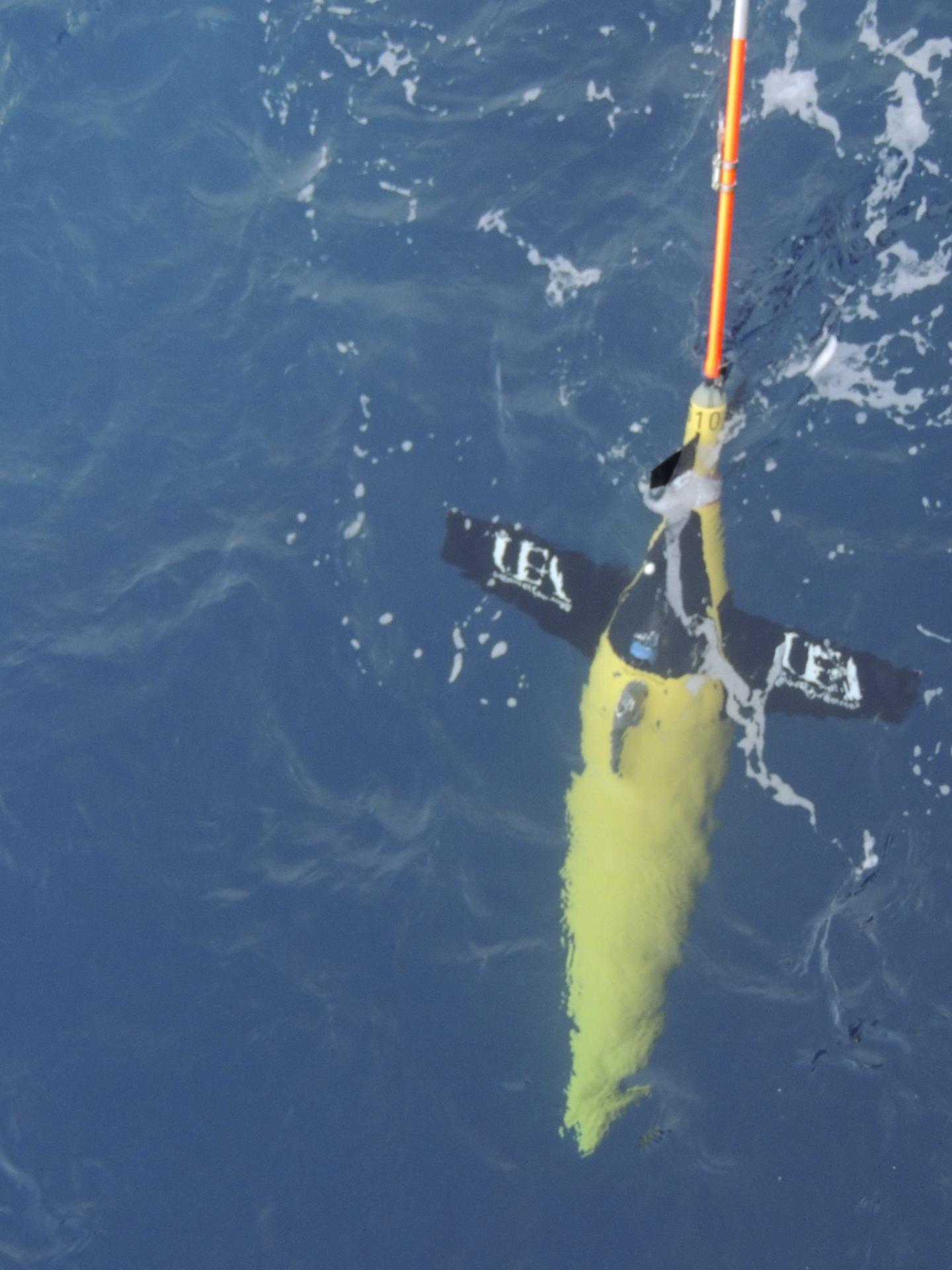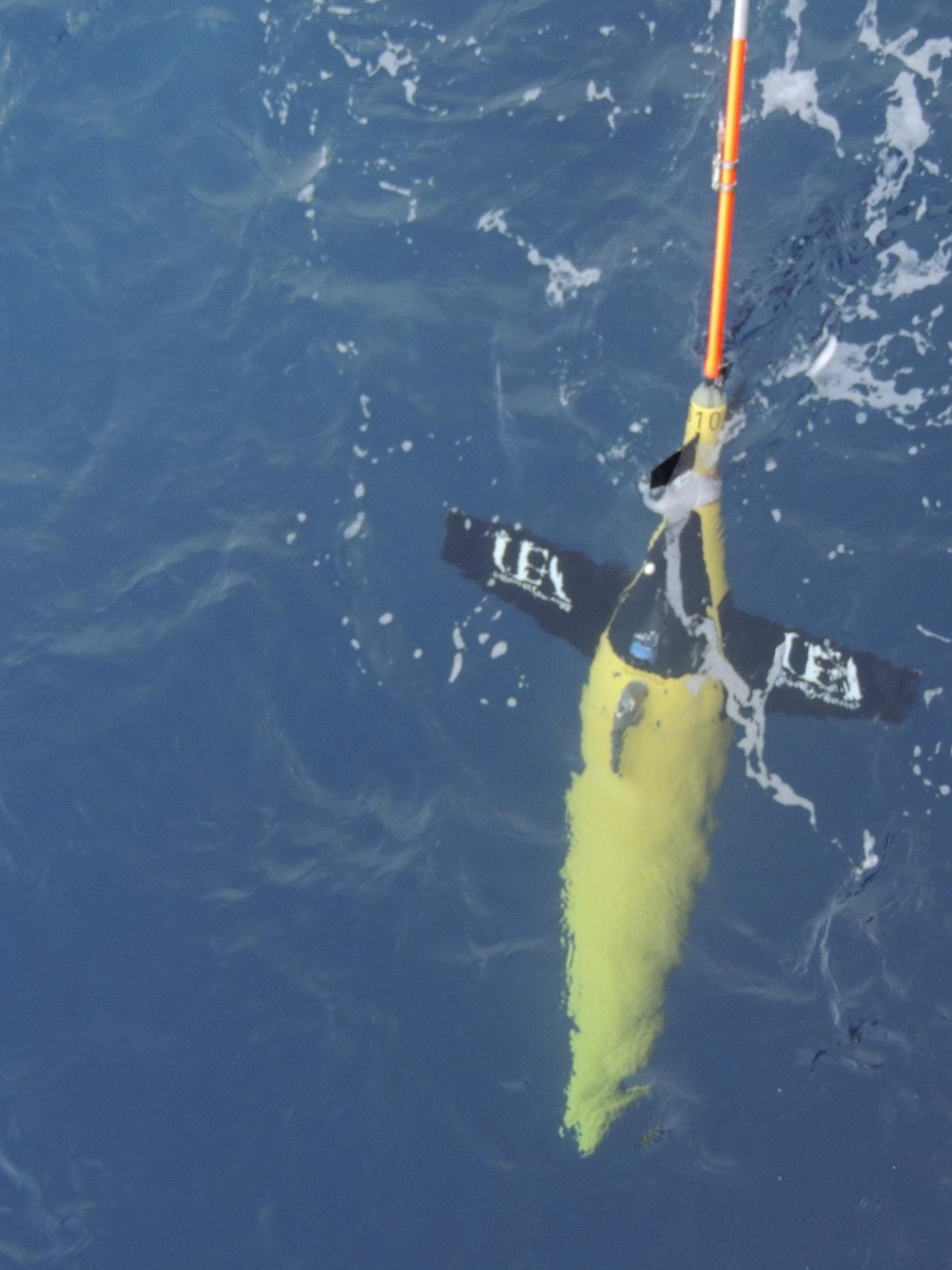
Credit: University of East Anglia
Silent marine robots that record sounds underwater are allowing researchers at the University of East Anglia (UEA) to listen to the oceans as never before.
The robots are about the same size as a small human diver, but can reach depths of 1000 metres and travel the ocean for months, covering thousands of kilometres. They communicate by satellite with their pilot to build an underwater soundscape of the world's oceans.
Pierre Cauchy, a PhD researcher from UEA's School of Environmental Sciences, has been using one of these autonomous submarines for five years, recording underwater noises in the Mediterranean Sea and the North Atlantic and Southern oceans.
The recordings can be used to measure sea-surface wind speed and monitor storms as well as eavesdropping on marine life.
Mr Cauchy will present his research at the General Assembly of the European Geosciences Union in Vienna. He will show how the robot – called a Seaglider – can measure the wind speed, listen in to the sounds made by fishes and whales, and pick up human activities, such as marine traffic and seismic surveys.
By recording sounds in remote locations where there are no permanent weather stations, the robots provide valuable information on wind or storm patterns, which can help to finetune climate models.
Mr Cauchy said: "As an acoustician, it is fascinating to listen in to underwater life such as long-finned pilot whales in the North Atlantic, but also to hear the echoes of what is happening in the skies above."
While pilot whales make whistles, buzzes and clicks, pods of hunting dolphins create high- pitched echolocation clicks and larger species such as sperm whales make louder, slower clicks.
High winds raise the background noise level, seismic surveys' intense pulses are unique and easily identifiable, and marine vessels are clearly identified by low-frequency rumbles.
The Seaglider weighs just over 50kg and is 1.5 metres tall. It is remotely controlled by a pilot and is silent, so records only sound from the ocean without adding its own tones.
Mr Cauchy said: "Now that they have been shown to be useful for modelling climate, monitoring storms or protecting marine life, I hope that other researchers will integrate the silent robot divers into their work and their use will broaden."
###
Media Contact
Lisa Horton
[email protected]
44-016-035-93496
@uniofeastanglia
http://comm.uea.ac.uk/press





